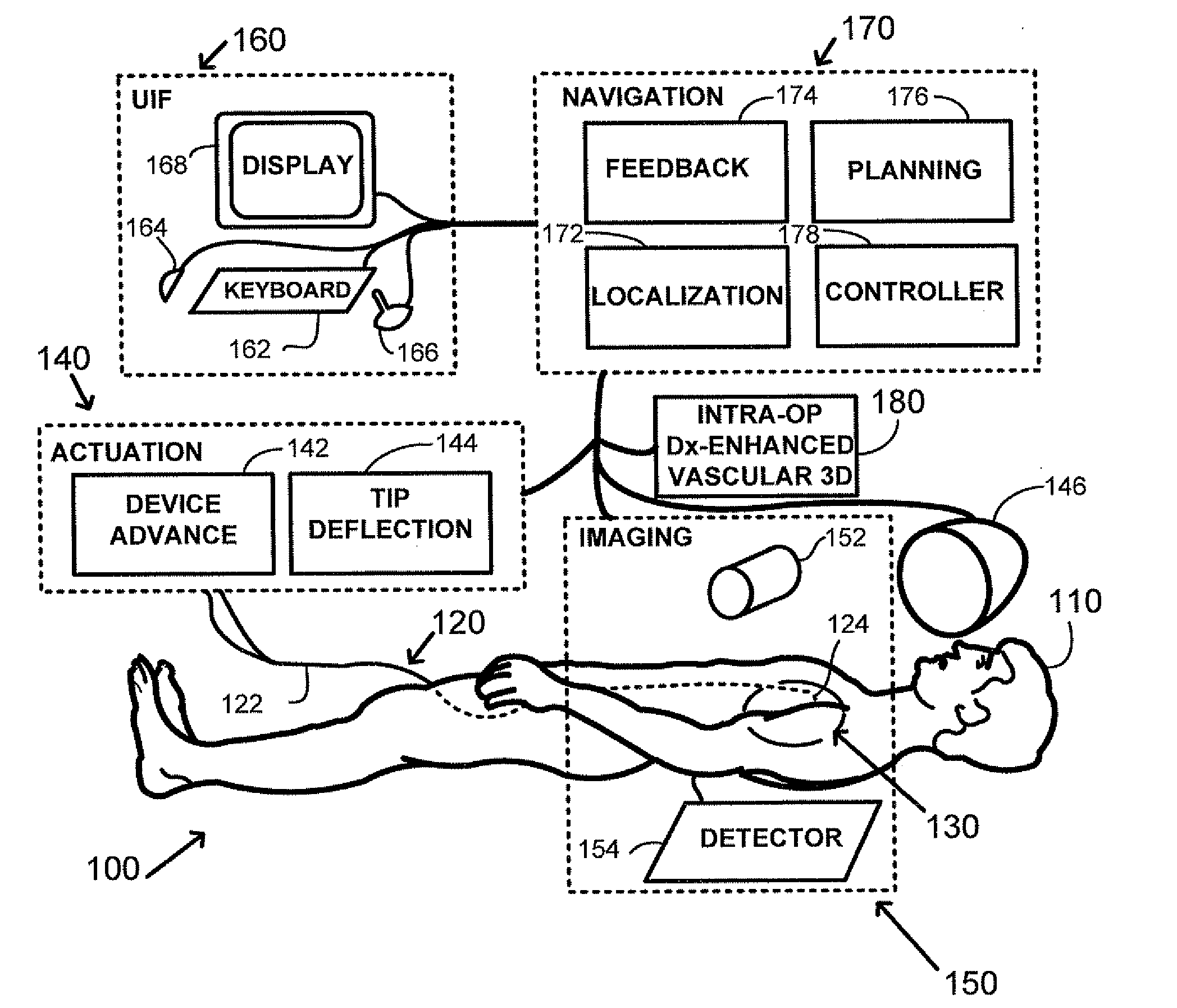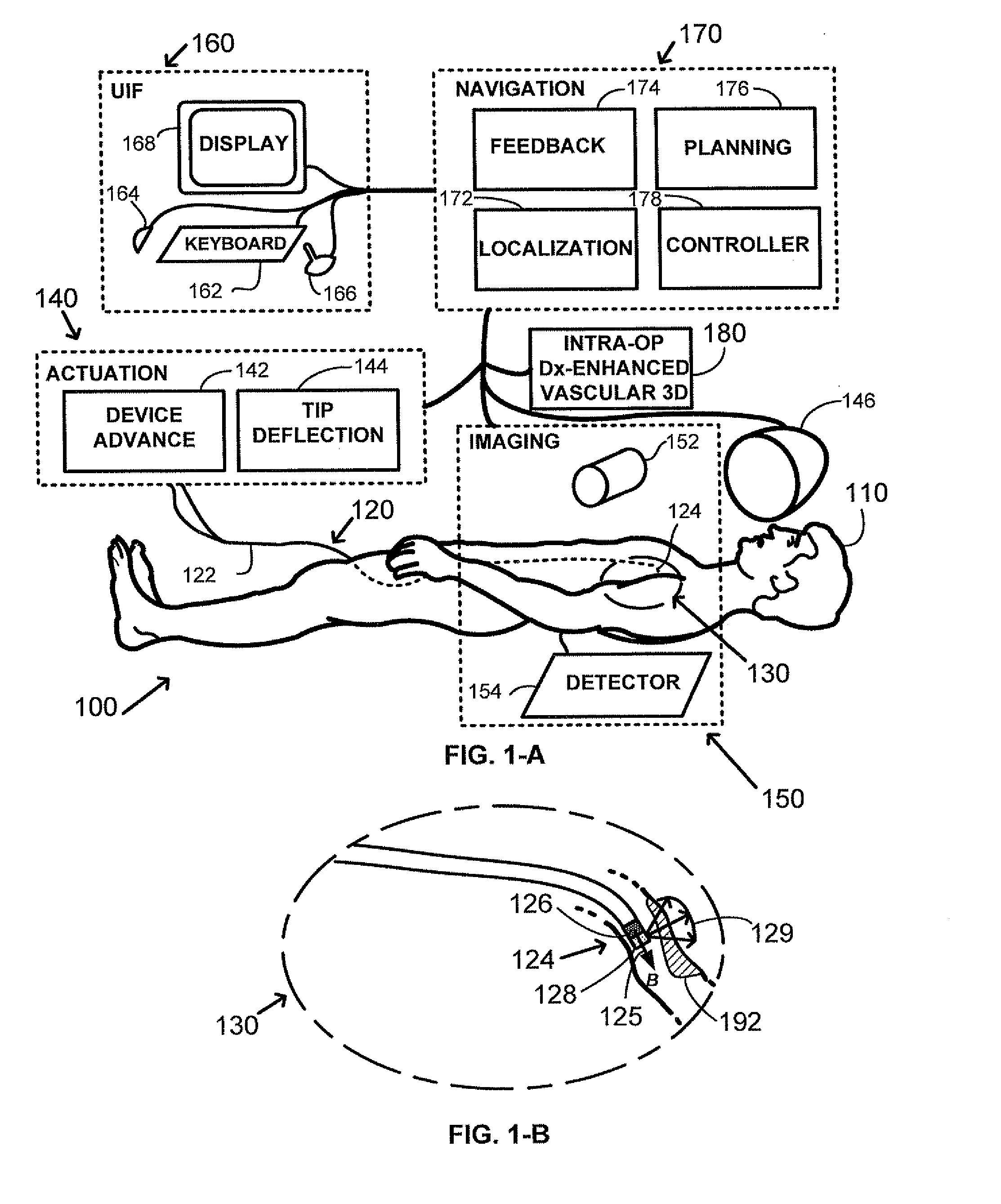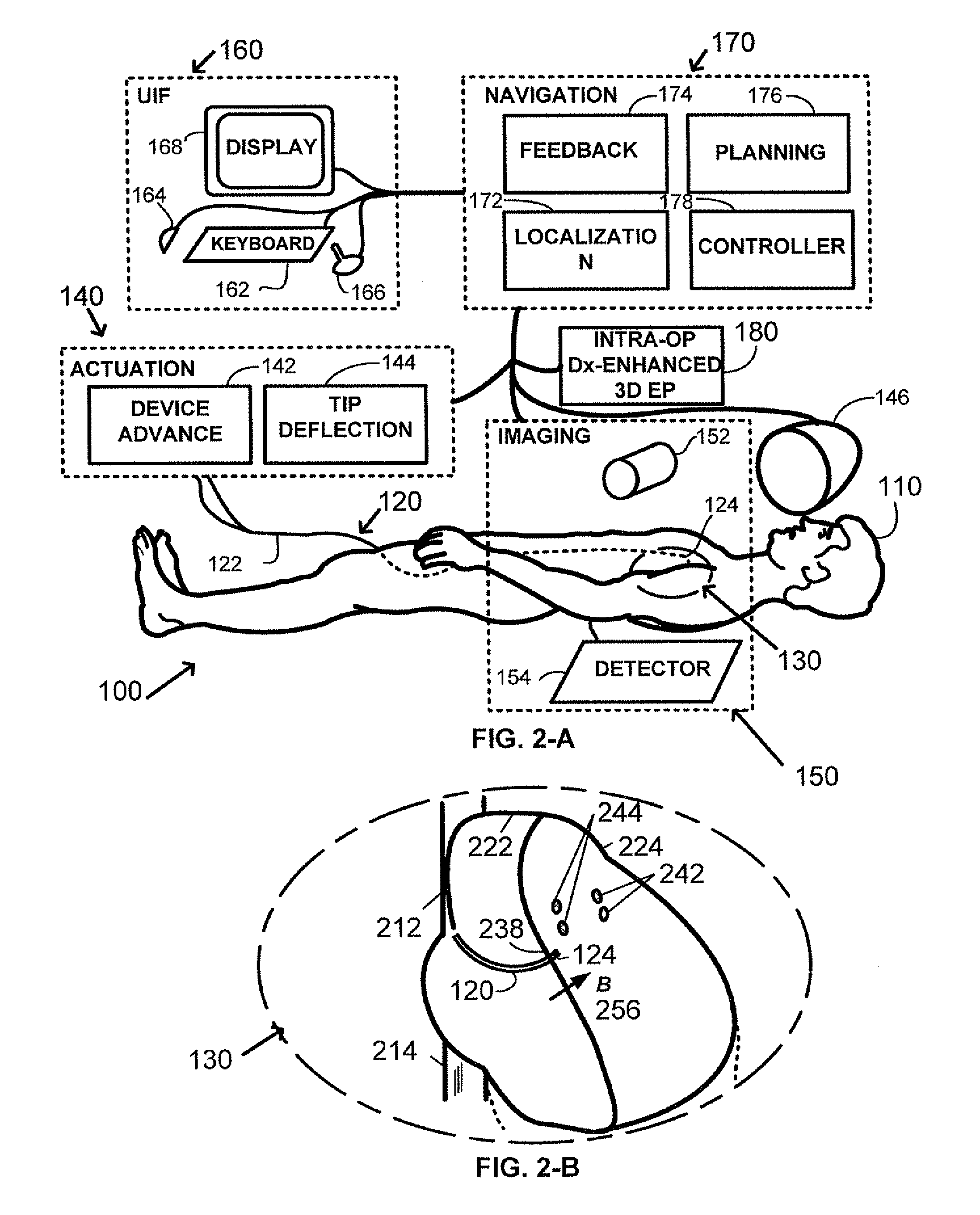Method and apparatus for remotely controlled navigation using diagnostically enhanced intra-operative three-dimensional image data
a three-dimensional image and remote control technology, applied in image enhancement, angiography, instruments, etc., can solve the problems of difficult registration of projection information provided, significant limitations associated with the use of x-ray projection imaging, and limited fluoroscopy, so as to achieve efficient diagnosis of conditions
- Summary
- Abstract
- Description
- Claims
- Application Information
AI Technical Summary
Benefits of technology
Problems solved by technology
Method used
Image
Examples
Embodiment Construction
[0019]As illustrated in FIG. 1, a patient 110 is positioned within an interventional system, 100. An elongated navigable medical device 120 having a proximal end 122 and a distal end 124 is provided for use in the interventional system 100, FIG. 1-A, and the medical device is inserted into a blood vessel of the patient and navigated to an intervention volume 130. A means of applying force or torque to orient the device distal end 124 is provided, as illustrated by actuation block 140 comprising a device advance / retraction component 142 and a tip deflection component 144. The tip deflection means may be one of (i) a mechanical pull-wire system; (ii) a hydraulic or pneumatic system; (iii) an electrostrictive system; (iv) a magnetic system; or (v) other navigation system as known in the art. For illustration of a preferred embodiment, in magnetic navigation a magnetic field externally generated by magnet(s) assembly 146 orients a small magnet located at the device distal end (126, FIG....
PUM
 Login to View More
Login to View More Abstract
Description
Claims
Application Information
 Login to View More
Login to View More - R&D
- Intellectual Property
- Life Sciences
- Materials
- Tech Scout
- Unparalleled Data Quality
- Higher Quality Content
- 60% Fewer Hallucinations
Browse by: Latest US Patents, China's latest patents, Technical Efficacy Thesaurus, Application Domain, Technology Topic, Popular Technical Reports.
© 2025 PatSnap. All rights reserved.Legal|Privacy policy|Modern Slavery Act Transparency Statement|Sitemap|About US| Contact US: help@patsnap.com



